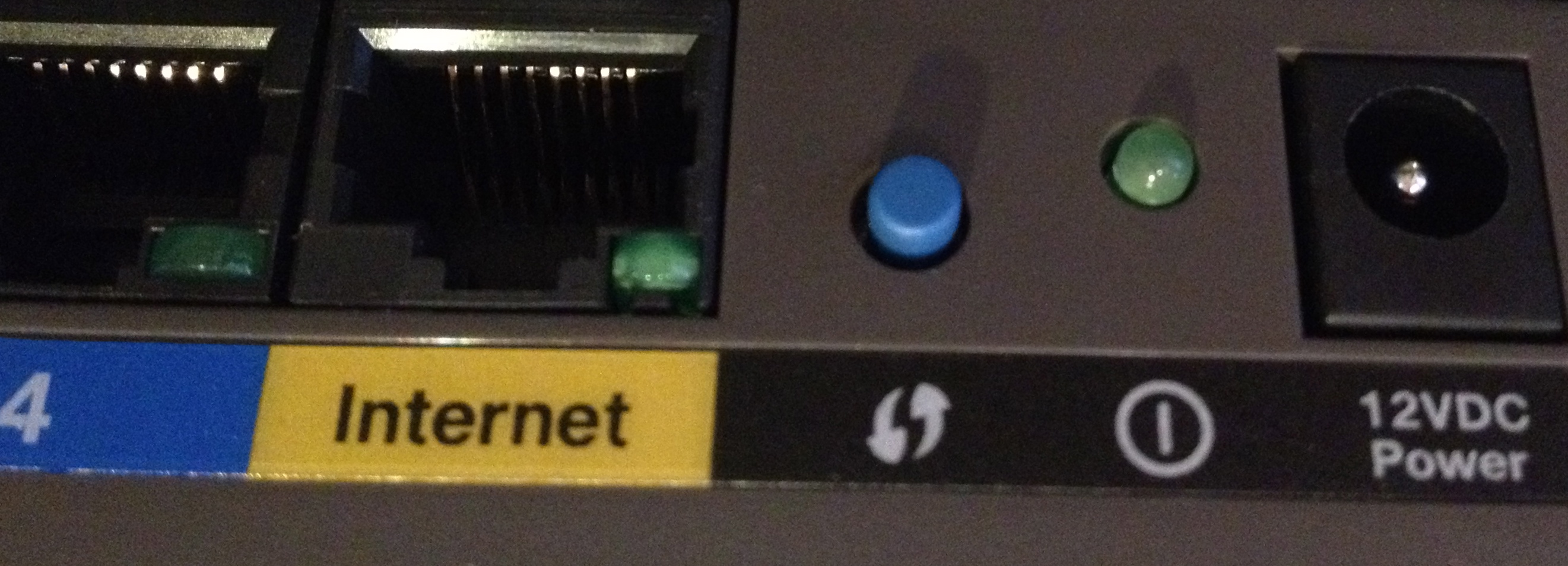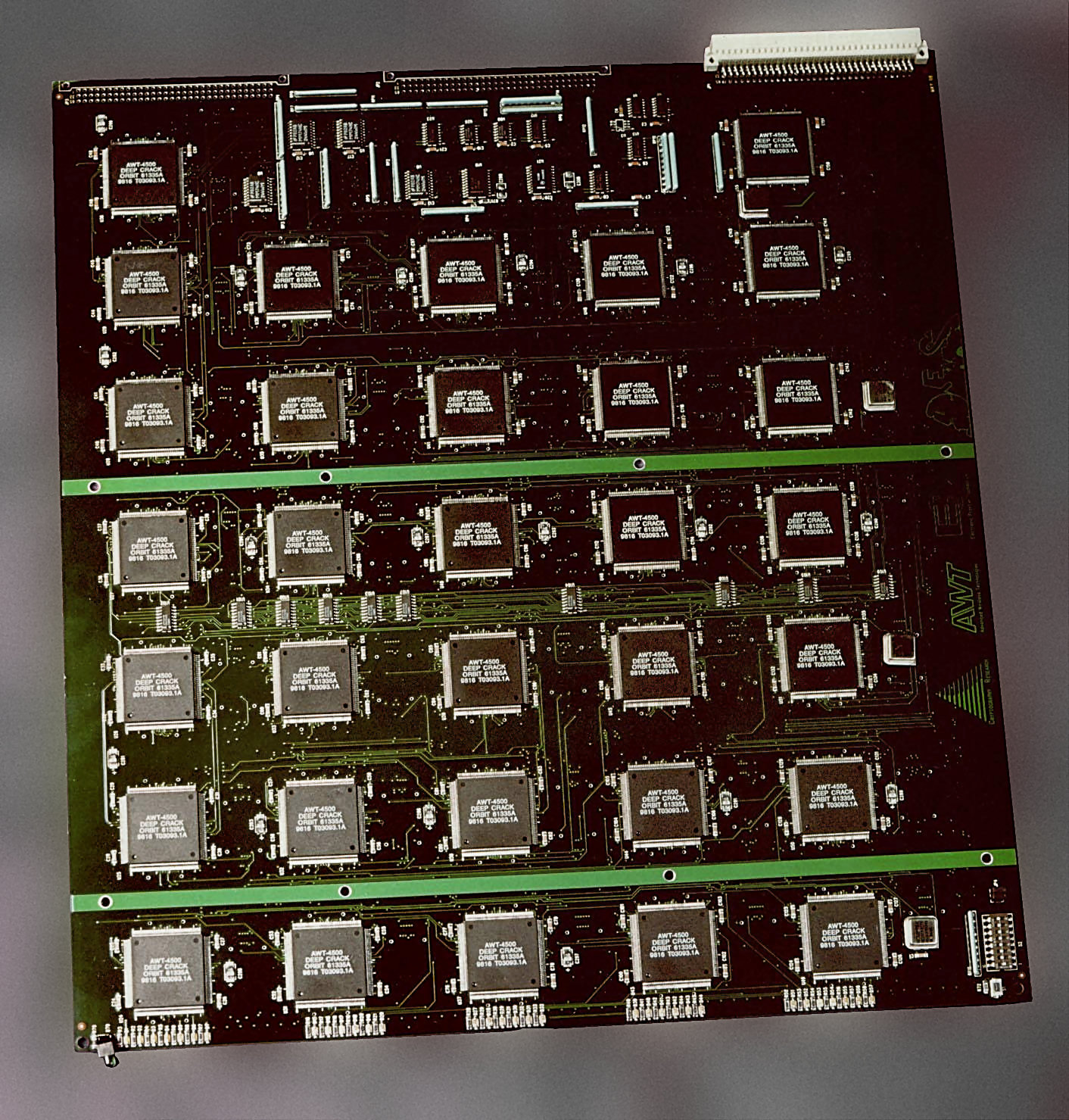|
SecureEasySetup
SecureEasySetup, or SES is a proprietary technology developed by Broadcom to easily set up wireless LANs with Wi-Fi Protected Access. A user presses a button on the wireless access point, then a button on the device to be set up (printer, etc.) and the wireless network is automatically set up. This technology has been succeeded by the industry-standard Wi-Fi Protected Setup. However, Wi-Fi Protected Setup was recently broken and has been shown to be easily breakable with brute-force attacks. References * Stephen Lawson (Jul 26, 2005Linksys Simplifies Wireless Security IDG News Service * Glenn Fleishman, (January 12, 2005Under the Hood with Broadcom SecureEasySetup wifinetnews.com * Rob Squires (9 January 2005Broadcom, HP close wi-fi security hole The Inquirer ''The Inquirer'' (stylized as TheINQUIRER) was a British technology tabloid website founded by Mike Magee after his departure from ''The Register'' (of which he was one of the founding members) in 2001. In 2006 the site ... [...More Info...] [...Related Items...] OR: [Wikipedia] [Google] [Baidu] |
Broadcom
Broadcom Inc. is an American designer, developer, manufacturer and global supplier of a wide range of semiconductor and infrastructure software products. Broadcom's product offerings serve the data center, networking, software, broadband, wireless, and storage and industrial markets. Tan Hock Eng is the company's president and CEO. The company is headquartered in San Jose, California. Avago Technologies Limited took the Broadcom part of the Broadcom Corporation name after acquiring it in January 2016. The ticker symbol AVGO that represented old Avago now represents the new merged entity. The Broadcom Corporation ticker symbol BRCM was retired. Broadcom has a long history of corporate transactions (or attempted transactions) with other prominent corporations mainly in the high-technology space. In October 2019, the European Union issued an interim antitrust order against Broadcom concerning anticompetitive business practices which allegedly violate European Union competition l ... [...More Info...] [...Related Items...] OR: [Wikipedia] [Google] [Baidu] |
Wi-Fi Protected Access
Wi-Fi Protected Access (WPA), Wi-Fi Protected Access II (WPA2), and Wi-Fi Protected Access 3 (WPA3) are the three security and security certification programs developed after 2000 by the Wi-Fi Alliance to secure wireless computer networks. The Alliance defined these in response to serious weaknesses researchers had found in the previous system, Wired Equivalent Privacy (WEP). WPA (sometimes referred to TKIP standard) became available in 2003. The Wi-Fi Alliance intended it as an intermediate measure in anticipation of the availability of the more secure and complex WPA2, which became available in 2004 and is a common shorthand for the full IEEE 802.11i (or IEEE 802.11i-2004) standard. In January 2018, Wi-Fi Alliance announced the release of WPA3 with several security improvements over WPA2. Versions WPA The Wi-Fi Alliance intended WPA as an intermediate measure to take the place of WEP pending the availability of the full IEEE 802.11i standard. WPA could be implemented throu ... [...More Info...] [...Related Items...] OR: [Wikipedia] [Google] [Baidu] |
Wireless Access Point
In computer networking, a wireless access point (WAP), or more generally just access point (AP), is a networking hardware device that allows other Wi-Fi devices to connect to a wired network. As a standalone device, the AP may have a wired connection to a router, but, in a wireless router, it can also be an integral component of the router itself. An AP is differentiated from a hotspot which is a physical location where Wi-Fi access is available. Connections An AP connects directly to a wired local area network, typically Ethernet, and the AP then provides wireless connections using wireless LAN technology, typically Wi-Fi, for other devices to use that wired connection. APs support the connection of multiple wireless devices through their one wired connection. Wireless data standards There are many wireless data standards that have been introduced for wireless access point and wireless router technology. New standards have been created to accommodate the increasing n ... [...More Info...] [...Related Items...] OR: [Wikipedia] [Google] [Baidu] |
Wi-Fi Protected Setup
Wi-Fi Protected Setup (WPS; originally, Wi-Fi Simple Config) is a network security standard to create a secure wireless home network. Created by Cisco and introduced in 2006, the point of the protocol is to allow home users who know little of wireless security and may be intimidated by the available security options to set up Wi-Fi Protected Access, as well as making it easy to add new devices to an existing network without entering long passphrases. Wi-Fi Protected Setup allows the owner of Wi-Fi privileges to block other users from using their household Wi-Fi. The owner can also allow people to use Wi-Fi. This can be changed by pressing the WPS button on the home router. A major security flaw was revealed in December 2011 that affects wireless routers with the WPS PIN feature, which most recent models have enabled by default. The flaw allows a remote attacker to recover the WPS PIN in a few hours with a brute-force attack and, with the WPS PIN, the network's WPA/WPA2 pre-shar ... [...More Info...] [...Related Items...] OR: [Wikipedia] [Google] [Baidu] |
Brute-force Attack
In cryptography, a brute-force attack consists of an attacker submitting many passwords or passphrases with the hope of eventually guessing correctly. The attacker systematically checks all possible passwords and passphrases until the correct one is found. Alternatively, the attacker can attempt to guess the key which is typically created from the password using a key derivation function. This is known as an exhaustive key search. A brute-force attack is a cryptanalytic attack that can, in theory, be used to attempt to decrypt any encrypted data (except for data encrypted in an information-theoretically secure manner). Such an attack might be used when it is not possible to take advantage of other weaknesses in an encryption system (if any exist) that would make the task easier. When password-guessing, this method is very fast when used to check all short passwords, but for longer passwords other methods such as the dictionary attack are used because a brute-force search ta ... [...More Info...] [...Related Items...] OR: [Wikipedia] [Google] [Baidu] |
International Data Group
International Data Group (IDG, Inc.) is a market intelligence and demand generation company focused on the technology industry. IDG, Inc.’s mission is centered around supporting the technology industry through research, data, marketing technology, and insights that help create and sustain relationships between businesses. IDG, Inc. is wholly owned by Blackstone and is led by Mohamad Ali, who was appointed CEO of the company in 2019. Ali serves on IDG, Inc.’s leadership team along with IDC President Crawford Del Prete, IDG, Inc.’s Chief Financial Officer Donna Marr, and Foundry President Kumaran Ramanathan. IDG, Inc. is headquartered in Needham, MA and is parent company to both International Data Corporation (IDC) and Foundry (formerly IDG Communications). History International Data Group was initially founded as International Data Corporate (IDC) in 1964 by Patrick Joseph McGovern, shortly after he had graduated from the Massachusetts Institute of Technology (MIT). Bas ... [...More Info...] [...Related Items...] OR: [Wikipedia] [Google] [Baidu] |
The Inquirer
''The Inquirer'' (stylized as TheINQUIRER) was a British technology tabloid website founded by Mike Magee after his departure from ''The Register'' (of which he was one of the founding members) in 2001. In 2006 the site was acquired by Dutch publisher ''Verenigde Nederlandse Uitgeverijen'' (VNU). Mike Magee later left The Inquirer in February 2008 to work on the ''IT Examiner''. Historically, the magazine was entirely Internet-based with its journalists living all over the world and filing copy online, though in recent years it has been edited from Incisive Media's offices in London. Although traditionally a ' red top', under ''Incisive Media'' it has put more weight behind its journalism, reducing the number of jibes at companies, and moved instead towards sponsored online debates in association with high-profile organisations, most recently, Intel. ''The Inquirer'' ceased publishing on 19 December 2019, partly due to declining digital advertising revenues. Scoops Sony lap ... [...More Info...] [...Related Items...] OR: [Wikipedia] [Google] [Baidu] |



